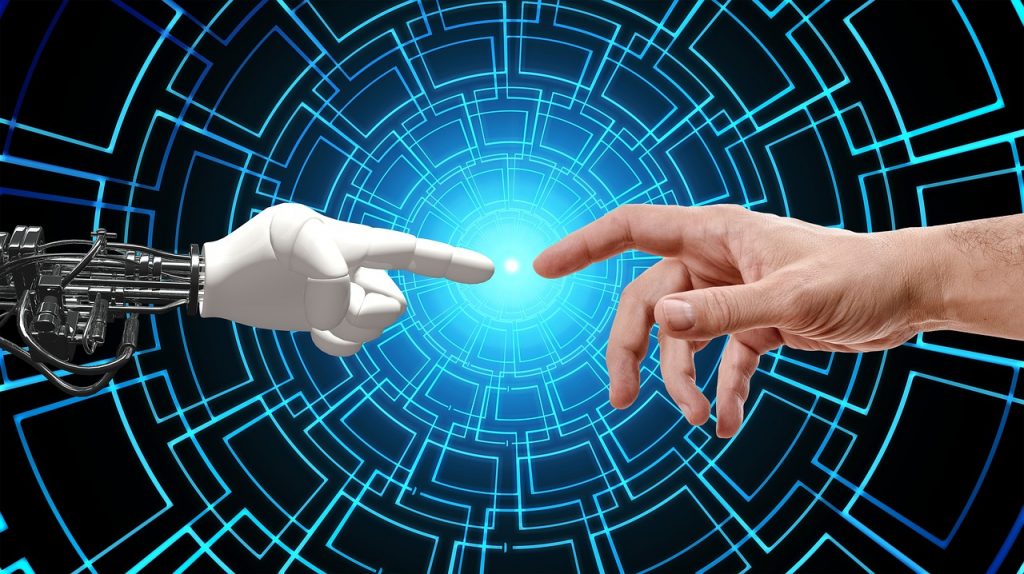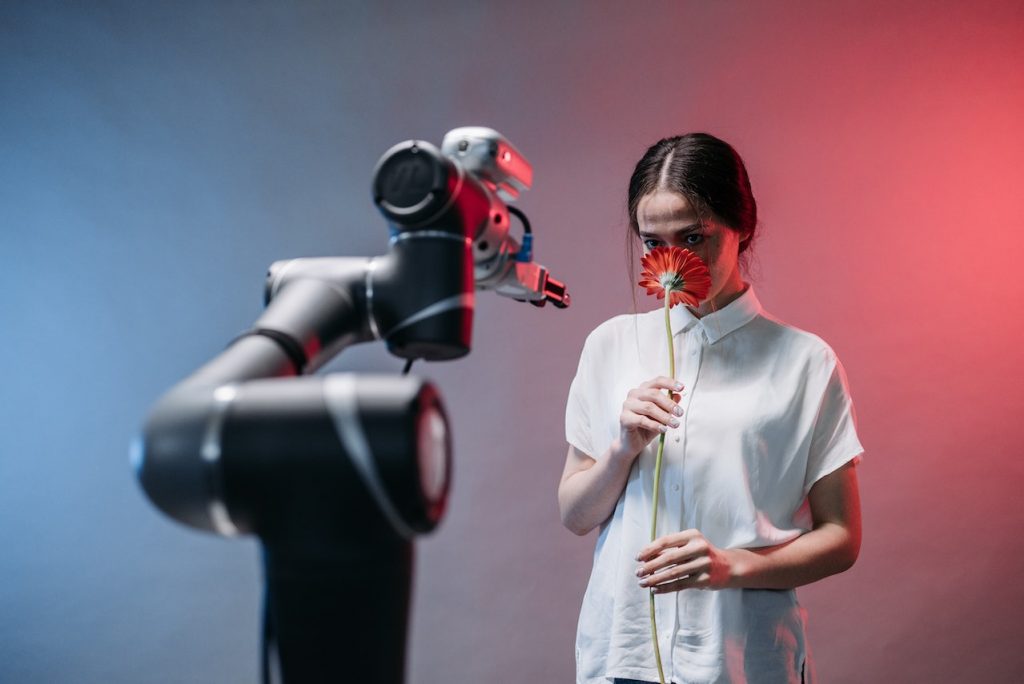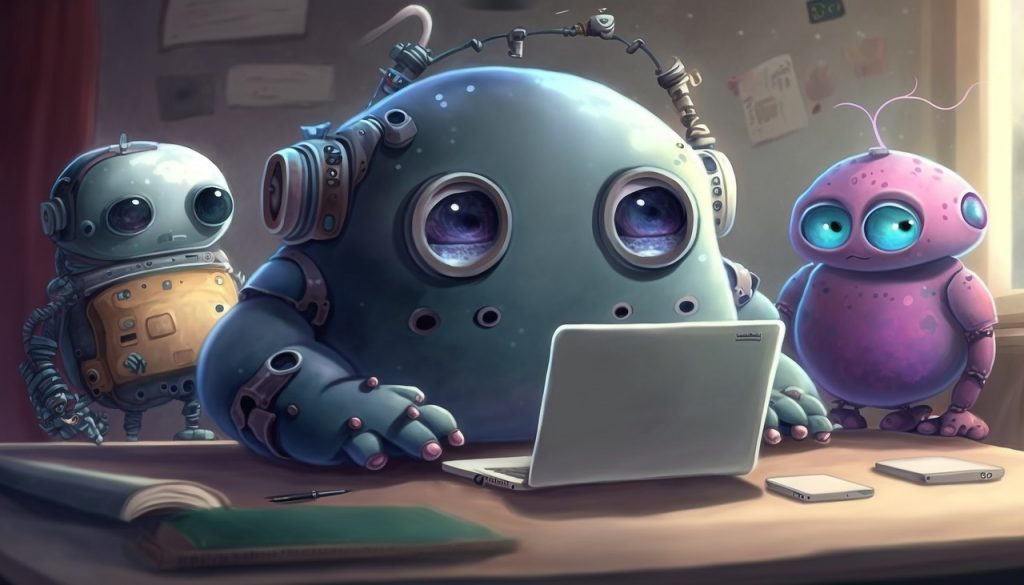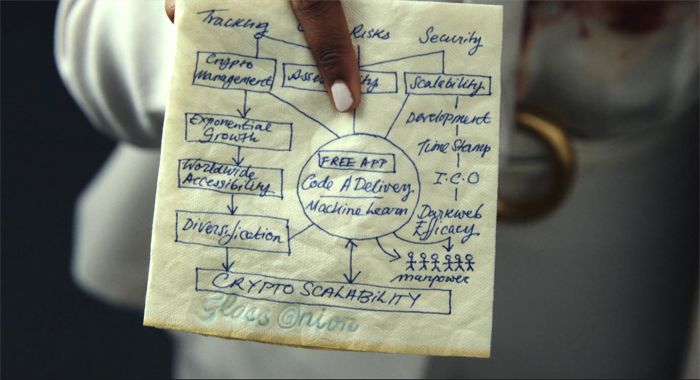
GUEST POST from Greg Satell
In 2011, MIT economists Erik Brynjolfsson and Andrew McAfee self-published an unassuming e-book titled Race Against The Machine. It quickly became a runaway hit. Before long, the two signed a contract with W. W. Norton & Company to publish a full-length version, The Second Machine Age that was an immediate bestseller.
The subject of both books was how “digital technologies are rapidly encroaching on skills that used to belong to humans alone.” Although the authors were careful to point out that automation is nothing new, they argued, essentially, that at some point a difference in scale becomes a difference in kind and forecasted we were close to hitting a tipping point.
In recent years, their vision has come to be seen as deterministic and apocalyptic, with humans struggling to stay relevant in the face of a future ruled by robot overlords. There’s no evidence that’s true. The future, in fact, will be driven by humans collaborating with other humans to design work for machines to create value for other humans.
1. Automation Doesn’t Replace Jobs, It Replaces Tasks
When a new technology appears, we always seem to assume that its primary value will be to replace human workers and reduce costs, but that’s rarely true. For example, when automatic teller machines first appeared in the early 1970s, most people thought it would lead to less branches and tellers, but actually just the opposite happened.
What really happens is that as a task is automated, it becomes commoditized and value shifts somewhere else. That’s why today, as artificial intelligence is ramping up, we increasingly find ourselves in a labor shortage. Most tellingly, the shortage is especially acute in manufacturing, where automation is most pervasive.
That’s why the objective of any viable cognitive strategy is not to cut costs, but to extend capabilities. For example, when simple consumer service tasks are automated, that can free up time for human agents to help with more thorny issues. In much the same way, when algorithms can do much of the analytical grunt work, human executives can focus on long-term strategy, which computers tend to not do so well.
The winners in the cognitive era will not be those who can reduce costs the fastest, but those who can unlock the most value over the long haul. That will take more than simply implementing projects. It will require serious thinking about what your organization’s mission is and how best to achieve it.
2. Value Never Disappears, It Just Shifts To Another Place
In 1900, 30 million people in the United States were farmers, but by 1990 that number had fallen to under 3 million even as the population more than tripled. So, in a manner of speaking, 90% of American agriculture workers lost their jobs, mostly due to automation. Still, the twentieth century was seen as an era of unprecedented prosperity.
We’re in the midst of a similar transformation today. Just as our ancestors toiled in the fields, many of us today spend much of our time doing rote, routine tasks. Yet, as two economists from MIT explain in a paper, the jobs of the future are not white collar or blue collar, but those focused on non-routine tasks, especially those that involve other humans.
Far too often, however, managers fail to recognize value hidden in the work their employees do. They see a certain job description, such as taking an order in a restaurant or answering a customer’s call, and see how that task can be automated to save money. What they don’t see, however, is the hidden value of human interaction often embedded in many jobs.
When we go to a restaurant, we want somebody to take care of us (which is why we didn’t order takeout). When we have a problem with a product or service, we want to know somebody cares about solving it. So the most viable strategy is not to cut jobs, but to redesign them to leverage automation to empower humans to become more effective.
3. As Machines Learn To Think, Cognitive Skills Are Being Replaced By Social Skills
20 or 30 years ago, the world was very different. High value work generally involved the retaining information and manipulating numbers. Perhaps not surprisingly, education and corporate training programs were focused on building those skills and people would build their careers on performing well on knowledge and quantitative tasks.
Today, however, an average teenager has more access to information and computing power than even a large enterprise would a generation ago, so knowledge retention and quantitative ability have largely been automated and devalued, so high value work has shifted from cognitive skills to social skills.
To take just one example, the journal Nature has noted that the average scientific paper today has four times as many authors as one did in 1950 and the work they are doing is far more interdisciplinary and done at greater distances than in the past. So even in highly technical areas, the ability to communicate and collaborate effectively is becoming an important skill.
There are some things that a machine will never do. Machines will never strike out at a Little League game, have their hearts broken or see their children born. That makes it difficult, if not impossible, for machines to relate to humans as well as a human can.
4. AI Is A Force Multiplier, Not A Magic Box
The science fiction author Arthur C. Clark noted that “Any sufficiently advanced technology is indistinguishable from magic” and that’s largely true. So when we see a breakthrough technology for the first time, such as when IBM’s Watson system beat top human players at Jeopardy!, many immediately began imagining all the magical possibilities that could be unleashed.
Unfortunately, that always leads to trouble. Many firms raced to implement AI applications without understanding them and were immediately disappointed that the technology was just that — technology — and not actually magic. Besides wasting resources, these projects were also missed opportunities to implement something truly useful.
As Josh Sutton, CEO of Agorai, a platform that helps companies build AI applications for their business, put it, “What I tell business leaders is that AI is useful for tasks you understand well enough that you could do them if you had enough people and enough time, but not so useful if you couldn’t do it with more people and more time. It’s a force multiplier, not a magic box.”
So perhaps most importantly, what business leaders need to understand about artificial intelligence is that it is not inherently utopian or apocalyptic, but a business tool. Much like any other business tool its performance is largely dependent on context and it is a leader’s job to help create that context.
— Article courtesy of the Digital Tonto blog
— Image credit: Pixabay
 Sign up here to join 17,000+ leaders getting Human-Centered Change & Innovation Weekly delivered to their inbox every week.
Sign up here to join 17,000+ leaders getting Human-Centered Change & Innovation Weekly delivered to their inbox every week.
 Drum roll please…
Drum roll please…![]() Sign up here to get Human-Centered Change & Innovation Weekly delivered to your inbox every week.
Sign up here to get Human-Centered Change & Innovation Weekly delivered to your inbox every week.






